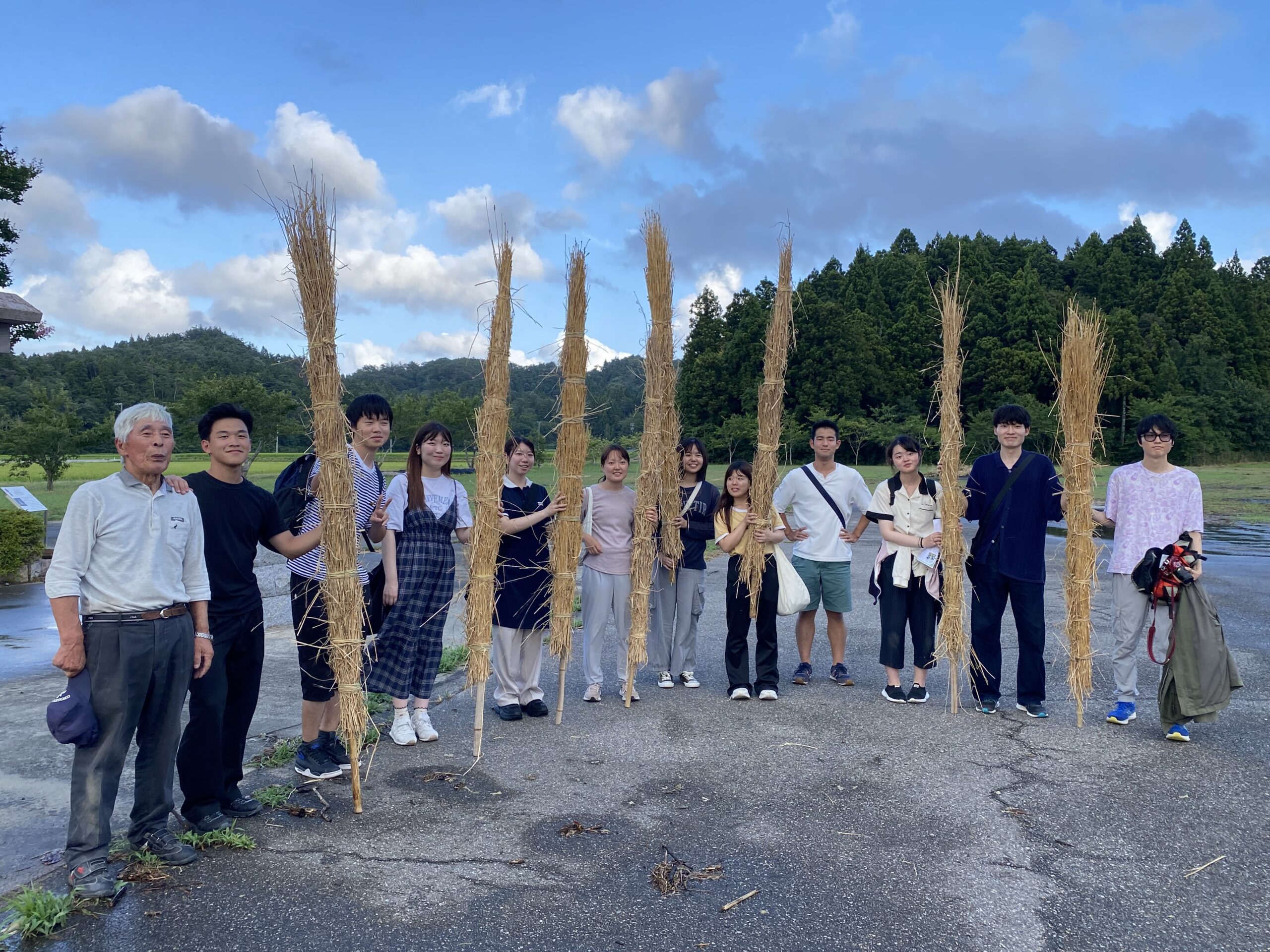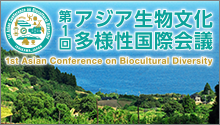The Globally Important Agricultural Heritage Systems (GIAHS) International Study Programme was first held in 2023, but postponed due to the earthquake’s aftermath in 2024, and it had taken place again this year in collaboration with Ishikawa Prefecture. The programme promotes sustainable regional development and broadens international perspectives by teaching about the nature, culture, and livelihoods of GIAHS regions through hands-on learning. The program also touches on the progress and challenges of disaster recovery.
In July, we held lectures and workshops to learn about Noto’s Satoyama and Satoumi (GIAHS site), as well as the impact of disasters and regional challenges.
August 7 – 9, we conducted a field study in Noto. There, we learned firsthand about local livelihoods and culture, as well as the damage caused by the earthquake and torrential rain, and recovery efforts. Participants visited sites involved in agriculture, fishing, salt production, charcoal making, and other industries. Through interactions with local residents, the students gained a deep understanding of the region’s strengths and challenges and discussed ideas and solutions for a sustainable future.
Day1: Noto’s Satoyama and Satoumi – Tourism industry and traditional festival culture
On the first day, Ms. Kanako Sakai of Misogawa Co., Ltd. guided us as we learned about Noto’s nature, tourism, and the progress of reconstruction after the earthquake. First, at the Noto Satoyama Satoumi Museum, we learned the overall picture of Noto’s Satoyama and Satoumi, which has been designated as GlAHS, as well as the characteristics of its nature and agriculture, forestry, and fisheries. Next, we visited Ipponsugi-dori, a street in the city center, where we learned about the damage caused by the earthquake and the ongoing recovery efforts. At Tazaemon, where we had lunch, we learned that running a guesthouse on Notojima Island was no longer possible, so they reopened as a restaurant in a temporary shopping street. We were also taught how to make tokoroten, traditional Japanese seaweed jelly. At Wakura Onsen, we learned about the reconstruction plan and learned how time-consuming it is to determine the direction of the reconstruction with many people involved. Then, Ms. Karin Yamazaki from Tadaya described the dire situation at the inn on New Year’s Day when the earthquake hit.
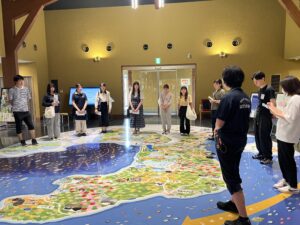
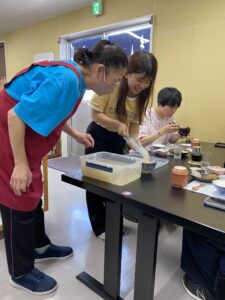
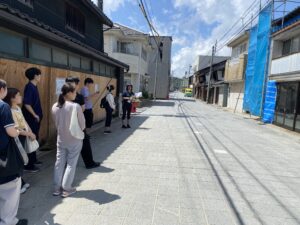
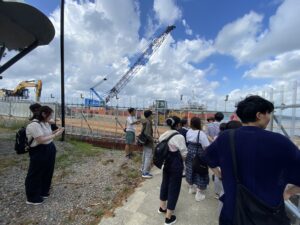
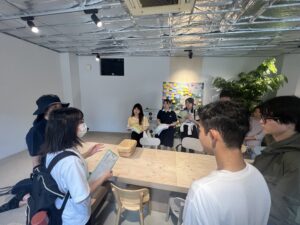
In the second half, we experienced Nanao’s omatsuri (festival) culture. At the Wakura Onsen Omatsuri Hal l, we learned about the city’s festivals and were introduced to the Koda Fire Festival on Notojima Island through videos and simulated experiences. Next, we learned how to make hand torches with Mr Masatoshi Takahashi’s guidance in Koda area. At the open space for the fire festival, we spun the torches around and felt the power of the regional community and the continuation of traditional culture.
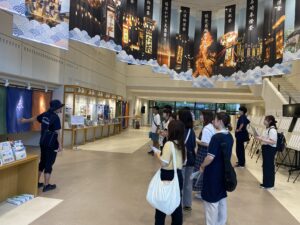
Day 2: The harsh natural environment and livelihoods on the Uraura side (the Japan Seaside)
In the morning, we visited the Tanigawa Brewery and the Shiroyone Senmaida Rice Terraces in Wajima City. At the brewery, we learned about its history, soy sauce production methods, flavor diversity, and connections with the local community. We also learned about the damage caused by the earthquake and the reconstruction process. At Shiroyone Senmaida, we learned about their manual cultivation management in a unique environment, as well as the seriousness of damage caused by invisible water leakage due to the earthquake.
In the afternoon, we visited Okunoto Salt Farm in Suzu City, where we observed traditional salt production methods deeply connected to the blessings of the satoyama. We witnessed the craftsperson’s skill at each stage of the process, from high-temperature boiling work in a hut to spreading saltwater. Next, we visited Ms. Matsumoto, a part-time farmer in Suzu City. She told us about various topics, such as the harvest times for different types of rice, their efforts to prevent animal damage and to restore abandoned farmland, the relationship between rice paddies and biodiversity, and their situation of rice cultivation after the earthquake.
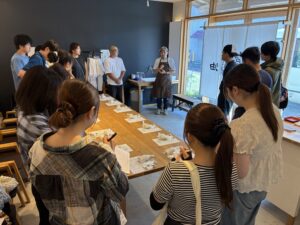
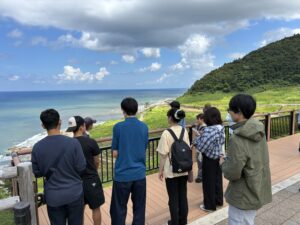

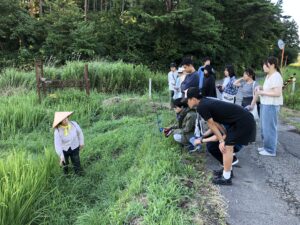
Day 3: Livelihoods that engage with rich rural, mountainous, and coastal resources
In the morning, we visited Notohahaso, the prefecture’s only full-time charcoal producer, and learned about their charcoal production process, traditional techniques, human resource development, regional migration promotion, and collaboration with tree planting initiatives. During our visit to the reforestation site, we learnt that satoyama management, which includes planting oak trees on abandoned farmland and repeatedly cutting and burning them to make charcoal, promotes the growth of diverse plant species and enhances biodiversity. Furthermore, we also learnt that they have achieved carbon negativity though their charcoal production process, which begins with tree planting. This makes it a good example of satoyama-based sustainable environmental conservation, which combines the preservation of traditional culture with climate change countermeasures.
Next, we visited the tsunami-stricken area of Horyu-machi to see the sites where houses and commercial facilities had been demolished and visit the community space. As for rebuilding residential area, various future challenges were raised, including relocation to safe areas, development of disaster prevention infrastructure, securing reconstruction funds, and lack of manpower due to an aging population. In the afternoon, we visited the Shitahira Fish Retailer in Ushitsu, Noto Town. There, we learned about fish purchasing, the market, fish species characteristic to Noto, recent changes in catch volume, as well as mobile sales the retailers used to do in the past. We learned that the culture of buying fish at a fish retailer is still very much alive in Noto.
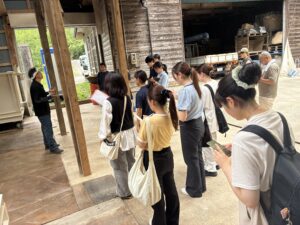
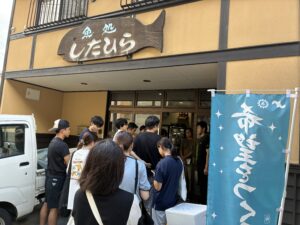
During our visits to various locations in Okunoto, although the high value of the diverse livelihoods supported by the rich resources of rural mountains and coastal areas is widely recognized, social changes and disasters are making it difficult to pass on livelihoods to the next generation. It was impressive to see the university students actively participating by asking questions and seeking solutions on site.


